Why MVP Development is Crucial for Startup Success in 2025
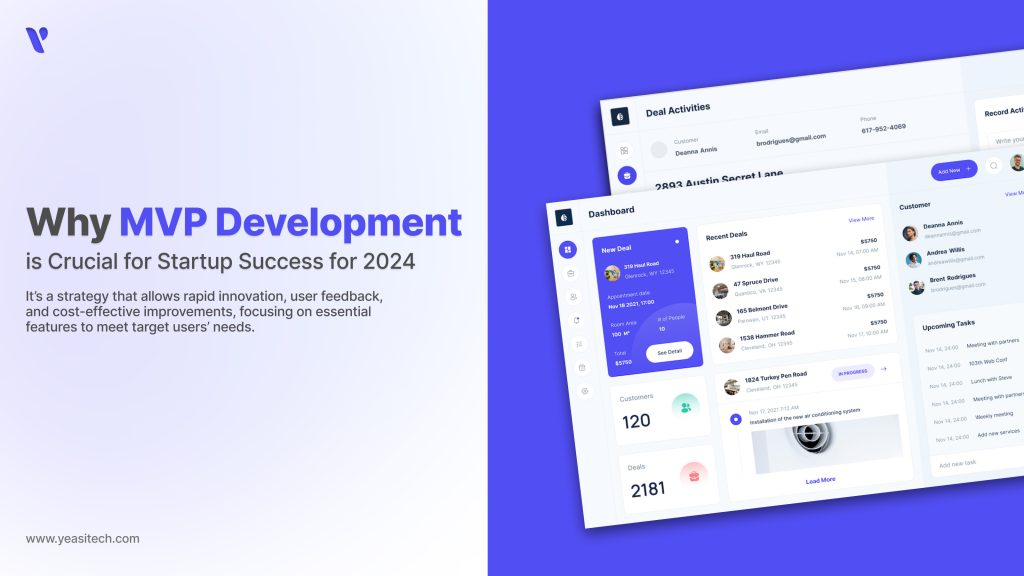
Mastering MVP development is crucial for startups. An MVP (Minimum Viable Product) isn’t just a basic version of a product; it’s a targeted strategy to validate ideas, test market fit, and iterate fast. In fact, 29% of startups fail because they run out of cash or don’t get product-market fit right—an MVP helps avoid that by focusing on core features.
Launching an MVP allows startups to gather real user feedback, make data-driven improvements, and refine their product in alignment with customer needs. This approach can cut development costs by up to 50%, making it an efficient way to deliver a product that solves a real problem.
MVP stands for minimum viable product. Frank Robinson first used the word in 2001, and Steve Blank and Eric Ries later helped to popularise it. It is a simple version of a product that businesses release to early users. An MVP’s primary objective is to get honest feedback from users to determine areas that require development without investing major expenditures.
Startups may determine whether their company idea is profitable and which features are most important to their target audience by publishing an MVP. In this manner, they avoid expending significant time and resources on a finished product up front. An MVP helps in the idea testing process, provides valuable input to entrepreneurs, and can help in informed product development decisions.
Using an MVP’s advantages can be key to a startup success. Without having to invest a lot of money or recruit a huge team, businesses may use this method to collect feedback from potential customers and learn more about their product. Developing MVPs is important for entrepreneurs. Here are more reasons why:
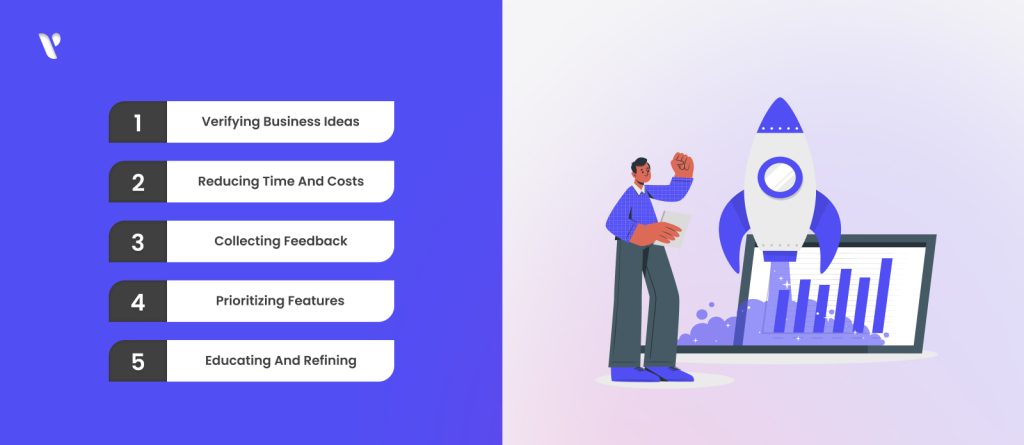
It’s time to get started on your concept now that it’s ready to go. MVP development is a mix of innovation, testing, and improvement rather than a simple technical task. Let’s explore it in detail:

Consider this your digital creation’s blueprint. To illustrate how your MVP will function, including where users will click, what they will see, and how everything works together, use wire framing tools. It’s similar to outlining the path of your product before you begin.
Now that you have your wireframes to guide you, it’s time to use code to create your MVP. Begin with the essential features you’ve chosen. Keep your code neat and organised, and remember to add comments; you’ll appreciate it later!
You’ve been waiting for this exciting opportunity to test your MVP on real customers. Hold on, though—don’t hurry to tell everyone about it just yet. Start small: invite a few close friends, family members, or early adopters to check out your product.
Remember that valuable feedback you collected? Now it’s time to use it. Gather insights from your testers and welcome criticism; it helps you improve. Look at their experiences, find any problems, and make your MVP better based on what you learn.
Keep going, my friend. It’s not a one-time thing but a continuous cycle of improvement. With each round, you’re not just fixing bugs; you’re making your MVP better, improving the user experience, and making it shine even brighter.
Once you have made your MVP better with feedback and it’s polished, it’s time to release it. Let real users try it out. But keep in mind, it’s not about a big launch event; it’s about releasing it carefully to learn from real-world use.
The startup MVP development journey doesn’t stop when you launch; it’s just the beginning. Observe the actions, words, and ways in which users interact with it. Make decisions on how to expand, what new features to add, and what future adjustments to make based on the information provided here.
Ready to start building your MVP? Book a free 15 mins Consulation with YeasiTech Expert and clear all your doubts.
Did you know that lots of billion-dollar companies began with an MVP? Let’s check out some of the top examples of successful MVPs in the real world:
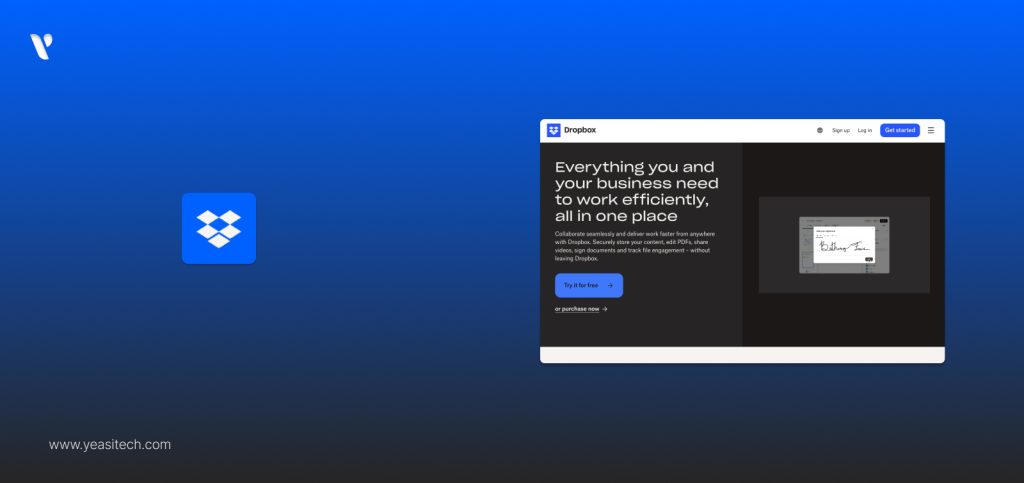
When Dropbox was introduced in 2007, it wasn’t the robust cloud storage platform we know today. Founder Drew Houston was aware of the challenges involved in convincing users to switch to a new service, especially in a saturated market. Rather than building a complete product from the get-go, Houston used an innovative approach: a simple 3-minute explainer video shared on Hacker News.
Early Period and Strategy: At the time, cloud storage was a concept that many potential users found hard to visualize or understand. The video demonstrated a basic version of Dropbox’s core functionality—syncing files between two devices almost instantaneously. The simplicity and clarity of the video gained significant attention from tech enthusiasts, and this was all achieved without a fully developed product.
Investment and Growth: Houston used the feedback and interest generated from the video to secure initial seed funding, primarily from Y Combinator. With this investment, Dropbox could refine its technology and officially launch in 2008. The company also released a second video, this time showcasing a more advanced version of Dropbox, which helped drive user signups at an even faster pace.
Today’s Profitability: Today, Dropbox has over 700 million registered users globally. Its initial MVP allowed the company to grow organically and strategically, now valued at over $10 billion, with annual revenues exceeding $2 billion as of 2023. What started as a simple MVP turned into one of the most recognized tech companies worldwide.
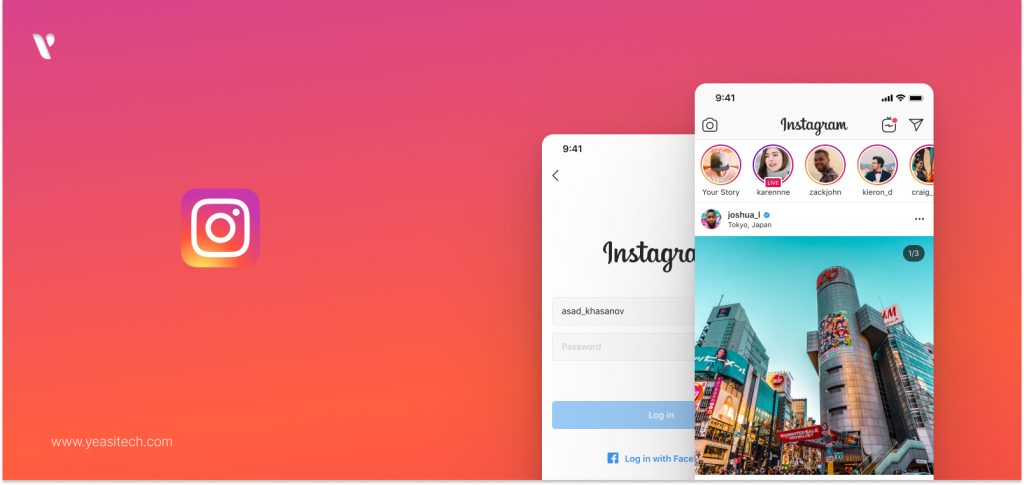
Before becoming the iconic photo-sharing app, Instagram started as a location-based social platform called Burbn, created by Kevin Systrom and Mike Krieger in 2010. The app allowed users to check in at places, plan meetups, and share photos. However, the founders realized that users were primarily engaging with the photo-sharing features, which led them to focus solely on that aspect.
Early Period and Pivot: The Burbn app was cluttered with features that confused users. Systrom and Krieger took a step back, studied user behaviour, and decided to strip the app down to its core—simple photo-sharing with filters. This pivot was a critical turning point, and in 2010, they rebranded the app as Instagram.
Investment and Growth: Instagram’s focus on simplicity quickly paid off. After launching in October 2010, Instagram garnered 1 million users in just two months. The startup’s MVP attracted venture capital interest, and in 2011, they raised $7 million in Series A funding. This investment helped them refine the app and expand their user base.
Today’s Profitability: In 2012, Instagram was acquired by Facebook for approximately $1 billion, an astounding figure considering it was only two years old at the time. As of today, Instagram has over 2 billion monthly active users, contributing significantly to Meta’s overall ad revenue, which exceeds $100 billion annually. Instagram’s focus on simplicity and its timely pivot is a prime example of a successful MVP strategy
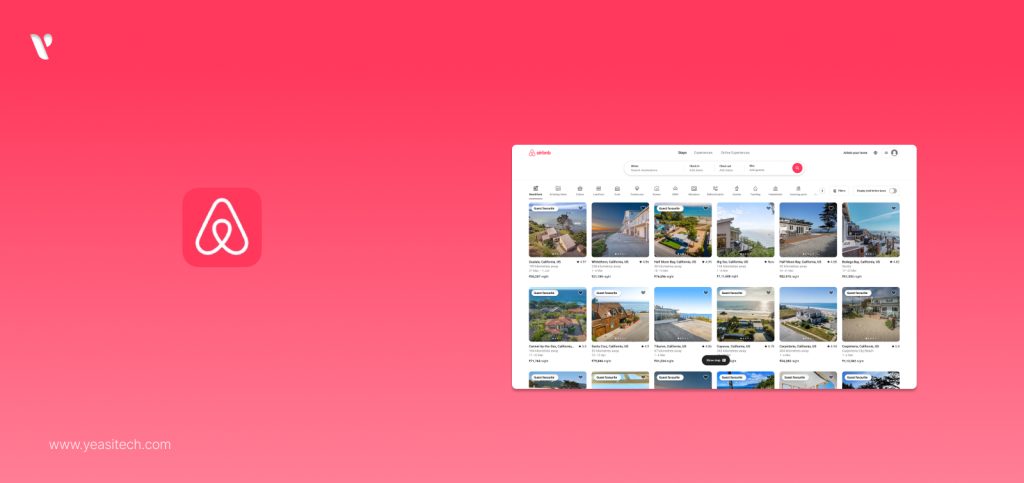
Back in 2007, Brian Chesky and Joe Gebbia, two roommates living in San Francisco, found themselves struggling to pay rent. During that time, San Francisco was hosting a major conference (IDSA), and hotels were fully booked. This gave the two an idea—why not rent out air mattresses in their apartment to conference attendees?
Early Period and MVP Launch: To get the word out, they created a simple website called Air Bed & Breakfast. The concept was basic: offer accommodation for a short stay, specifically targeting the overflow from large events. The MVP was scrappy but effective, as it allowed them to test the concept with real users without investing heavily in development.
Investment and Growth: Airbnb faced several rejections in the early stages. However, by continuously iterating their idea and refining their platform, they attracted the attention of startup accelerator Y Combinator. With an initial $20,000 investment, they built out their platform and eventually raised $600,000 in seed funding from prominent investors like Sequoia Capital.
Today’s Profitability: Today, Airbnb has over 7 million listings across 220 countries, disrupting the hospitality industry entirely. As of 2023, the company’s market cap exceeds $100 billion, with annual revenues nearing $9 billion. The MVP strategy allowed Airbnb to test the waters without significant upfront investment, paving the way for its current global success.

Early Period and MVP Launch: Initially, the app was bare-bones, with a single function—requesting a ride at the tap of a button. The MVP didn’t offer fare estimation, ride-sharing, or any of the advanced features we know today. But this simplicity was enough to attract early adopters, particularly tech-savvy individuals in San Francisco.
Investment and Growth: Uber’s MVP quickly caught the attention of venture capital firms. In 2010, the company secured $1.25 million in seed funding. As the company expanded into more cities, its vision grew, and so did its funding. Uber went on to raise millions in subsequent funding rounds, eventually becoming one of the most highly valued startups in the world.
Today’s Profitability: As of 2023, Uber operates in over 70 countries and has expanded its services to include UberEATS and UberPOOL. The company generates over $30 billion in revenue annually and boasts a market capitalization of around $80 billion. Uber’s MVP laid the foundation for a global transportation revolution, proving that focusing on one core problem can lead to massive success.
Many successful startups owe their growth to the right MVP development process. Companies like Instagram, Dropbox, Airbnb, and Uber all began with MVPs. Why? Because MVPs allow startups to validate ideas, minimize risks, and conserve resources while setting the foundation for scaling.
MVPs help startups save up to 50% in development costs, test their concepts with real users, and attract early-stage investors. They provide a low-risk environment to refine products based on real feedback.
If you’re ready to begin your MVP journey, this is the moment to choose the right development partner. At Yeasitech, we specialise in crafting MVPs that deliver results using the latest technologies and proven methodologies.
An MVP is a basic version of a product with essential features to meet initial customer needs. It helps startups test ideas, gather feedback, and validate business hypotheses, saving time and resources.
Focus on core functionalities that solve the main problem for your audience. Use market research, customer feedback, and prioritize features for maximum impact and feasibility.
1.Adding too many features
2.Ignoring user feedback
3.Skipping product validation
4.Not iterating based on feedback
Yes, it evolves through user feedback and market needs, enabling startups to improve and adapt.
Success may be determined by looking at user interaction, feedback, and whether the MVP achieves its original objectives, which include finding market demand and verifying the company idea.
An MVP development should only provide the features that are absolutely necessary to address the primary issue and satisfy the requirements of early users. Feedback from users may be used to build further features.
An MVP might take several weeks to several months to develop, depending on the resources available and the complexity of the project.
Once an MVP has been released, evaluate user comments and data to improve the product, add new features, and expand to a larger market.
Bootstrapping: Use personal savings.
Angel Investors: Seek individuals investing in startups.
Venture Capitalists: Offer equity for funding.
Crowdfunding: Use platforms like Kickstarter.
Grants and Competitions: Apply for financial awards.
YeasiTech is a trusted IT service partner with 8+ years of experience, empowering 250+ businesses with scalable web, mobile and AI solutions.
Explore related topics to broaden your understanding and gain actionable insights that can transform your strategies.